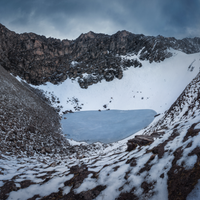Login
Subscribeskeleton

Reconstructing How the Spine Takes its Shape
Nele Haelterman, PhD | Aug 5, 2022 | 3 min read
Marina Sanaki-Matsumiya figured out how to grow human somites in a dish through a process that mirrors the tissue’s development in the embryo.

Surface Area of Tooth Roots Predicts Primate Body Size
Maddie Bender | May 2, 2022 | 2 min read
Researchers determine that a primate’s tooth root, and not just its crown, can yield reliable information about body size, but the relationship between root surface area and diet isn’t as clear.

Engineered Stem Cells Grant Geckos “Perfectly” Regenerated Tails
Chloe Tenn | Nov 5, 2021 | 4 min read
Geckos injected with neural stem cells modified to block cartilage growth developed the skeletal and nervous components normally lacking from regrown tails.

A Simple Genetic Change Adds Limb-Like Bones to Zebrafish Fins
Abby Olena, PhD | Feb 5, 2021 | 4 min read
A gain-of-function mutation in a single gene reveals ancient limb-forming capacity that has been preserved for hundreds of millions of years.

Two Studies Question Function of Bone Hormone Osteocalcin
Ruth Williams | May 29, 2020 | 4 min read
Independently produced knockout mouse strains fail to find evidence of the bone protein’s endocrine functions, and divide researchers’ opinions.

Skulls from the Yucatán Peninsula a Clue to Early American Settlers
Alejandra Manjarrez, PhD | Apr 7, 2020 | 8 min read
The crania of individuals who lived in the Yucatán Peninsula during the late Pleistocene show a high degree of anatomical diversity among them, and their skull shapes differ from that of other North American populations of the time.

Neanderthal Skeleton Find Supports Idea of Intentional Burials
Amy Schleunes | Feb 19, 2020 | 2 min read
Microscopic plant remnants found near the bones indicate that the ancient humans practiced burying rituals, but the archaeological field is not in full agreement.

Image of the Day: Brittle Star
Emily Makowski | Nov 20, 2019 | 2 min read
This marine animal looks like a sea star, but don’t be fooled.

Image of the Day: Fukuipteryx Fossil
Emily Makowski | Nov 15, 2019 | 1 min read
This ancient bird has a modern tail bone.

Image of the Day: Skeleton Lake
Nicoletta Lanese | Aug 23, 2019 | 1 min read
Human remains around Roopkund Lake in India bear South Asian, East Asian, and Mediterranean ancestry.

Caution Urged for Comparing Ancient and Modern Humans’ Oral Microbes
Alejandra Manjarrez, PhD | Aug 7, 2019 | 4 min read
Microbial species that are commonly associated with oral diseases in modern humans are unreliable proxies for determining tooth health status in ancient samples, a new study finds.

Image of the Day: Catfished
Chia-Yi Hou | Apr 24, 2019 | 1 min read
The skull bones of a catfish move in coordination when capturing prey.

Image of the Day: Scotty the T. rex
Carolyn Wilke | Mar 25, 2019 | 1 min read
The world’s largest T. rex found to date likely weighed nearly 20,000 pounds during its life.

Human Birth Canal Varies More Widely than Previously Thought
Anna Azvolinsky | Oct 24, 2018 | 3 min read
The pelvic bones of women have been shaped more by random evolution than by natural selection, a new study finds.

Human Skeletal Stem Cell Found
Abby Olena, PhD | Sep 20, 2018 | 3 min read
Researchers recovered the cells that give rise to bone and cartilage from fetal and adult bone marrow and also derived them from induced pluripotent stem cells.

Scientists in Chile Protest Mummy Study
Jim Daley | Mar 29, 2018 | 2 min read
The Chilean government contends that the remains of a mummified fetus, recently sequenced by US researchers, were exhumed illegally.

Image of the Day: Deep Sea Fangs
The Scientist Staff and The Scientist Staff | Dec 1, 2017 | 1 min read
Scientists are taking a close look at fish skeletons for inspiration to solve engineering problems.

Bronze Age Plague Sequenced
Karen Zusi | Oct 26, 2015 | 1 min read
Plague-causing bacteria may have been around as early as 5,000 years ago, though a genomic analysis suggests that ancient strains were less contagious.

Ancient Comb Jelly Bones?
Jef Akst | Jul 13, 2015 | 1 min read
Comb jellies, soft-bodied marine creatures that swim by beating rows of cilia, may once have had a hard skeleton.
